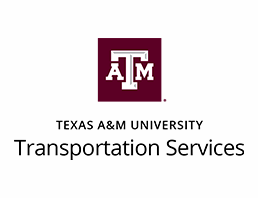
We have gone from running about 4.5 million passenger trips up to nearly 8 million passenger trips, without overhauling the size of our fleet.
Randy Davidson
Senior IT, Texas A&M University Transportation Services
Video Transcript
Texas A&M transit system, we have 97 buses, we operate 18 routes on and off campus. We have 63,000 students, about 10,000 faculty and staff, as well as some city population that rides the buses also. So it is a large operation and it is one of the largest in the state. Technically in the state of Texas we have the 6th largest transit agency. On a normal fall or spring semester day, we carry an average of about 50,000 passengers.
We’ve added TripSpark’s technology. Each one of our buses is equipped with a Ranger Mobile Data Terminal which allows us to know where the bus is and what the bus is supposed to be doing. It gives a good interface to the driver. We have Automatic Passenger counters. We have CAD-AVL, Computer Aided Dispatch and Automated Vehicle Location.
We’re able to split shifts on the fly if we need to. We can take shifts and move them to another person, and it automatically follows that person, so as soon as they sign on to the Ranger, then they have their work and they can go on about their day and we don’t have to worry about it anymore.
The number of complaints that we’re seeing has dropped dramatically over the last 7 years since we started using TripSpark, because the bus is where it’s supposed to be and the students know where the bus is supposed to be.
Allowing our passengers to have access to the real-time data on the buses has greatly affected the way they use our system. They can look while they’re still sitting in their apartment or dorm, they can look to see if the bus is outside or if maybe it’s running a bit late. They don’t have to go outside and stand there waiting for 10 minutes waiting on the next bus.
Now that they have that real-time data and they have the passenger information that’s on each bus, they don’t have to call us to ask us that information, so it’s allowed our dispatchers and our office staff to actually concentrate more on their job of running our fleet and making sure we’re running it efficiently.
Improving our efficiency has been very important to us, because we have limited resources. Buying a bus such as the one we’re sitting on, costs about $500,000. We have to get every rider on this bus possible and try to get them to their location quickly, or else we can’t run an efficient business.
We will start interlacing routes. We’ll run one route that runs say route 27 and then turns around and runs route 12 or something else, so we use less buses as the day goes on in order to get the same benefit for the students.
We have gone from running about 4.5 million passenger trips up to nearly 8 million passenger trips, without overhauling the size of our fleet.
One thing we were looking for in a vendor is that they would be willing to work with us after the sale, and TripSpark has done that very well.
We were looking for a partner to help us succeed, and TripSpark has been that partner.
